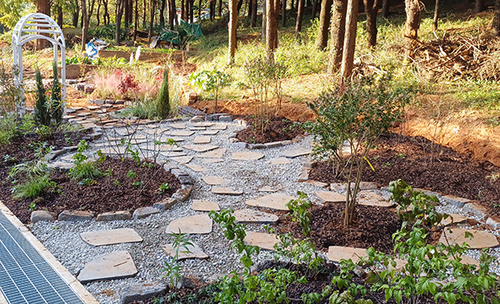| ▲ 전북교육청이 교육연구정보원 유레카 통계분석 시스템을 활용, 지난 4월 11일부터 5월 20일까지 도내 초등학교 4학년부터 고3 학생을 대상으로 '2022년 학교폭력 실태조사'를 실시한 결과, ▲ 초등학생 694명 ▲ 중학생 433명 ▲ 고등학생 156명 ▲ 기타 5명이 피해를 입었다고 응답했다. / 도표제공 = 전라복도교육청 © 김현종 기자 |
|
| ▲ 피해 시간대는 쉬는 시간(점심시간 = 11.1%ㆍ정규 수업시간 = 6.9%)에 발생하는 비율이 증가(35.3% → 42.3%)했고 하교 이후 시간에 발생하는 비율은 크게 감소(23.6% → 13.4%)한 것으로 나타났다. © 김현종 기자 |
|
학교폭력의 저연령화 현상이 심각한 것으로 들춰져 처벌 위주가 아닌 교육관계 형성 및 관 계 회복ㆍ심리 정서적 지원ㆍ학급 단위 교육활동 지원 등 자치 중심의 통합관리시스템 운영이 시급한 것으로 지적됐다.
13일 전북교육청은 교육연구정보원 유레카 통계분석 시스템을 활용해 실시한 '2022년 학교폭력 실태조사' 결과를 발표했다
이번 조사는 지난 4월 11일부터 5월 20일까지 도내 초등학교 4학년부터 고3 학생을 대상으로 이뤄졌으며 조사 대상 14만7,115명 가운데 45.8%인 67,312명이 응답했다.
피해 응답률은 1.9%(1,288명)로 지난해 조사 대비 0.6%p 소폭 증가한 수치다.
특히 응답자 가운데 ▲ 초등학생 694명 ▲ 중학생 433명 ▲ 고등학생 156명 ▲ 기타 5명이 피해를 입었다고 답변했다.
이 가운데 고등학교는 소폭 감소했으나 초등학교와 중학생 폭력이 압도적으로 많아 학교폭력의 저연령화 추세를 드러냈다.
피해 유형별로 살펴보면, 언어폭력(48.7%)을 당했다는 응답자가 가장 많았고 집단따돌림(15.5%)ㆍ신체폭행(11.5%)ㆍ사이버폭력(7.7%)ㆍ스토킹(3.3%)이 뒤를 이었다.
지난해 조사 대비, 사이버폭력과 금품갈취 및 강요 등의 비율은 소폭 감소했다.
피해 시간대는 쉬는 시간(점심시간 = 11.1%ㆍ정규 수업시간 = 6.9%)에 발생하는 비율이 증가(35.3% → 42.3%)했다.
하교 이후 시간에 발생하는 비율은 크게 감소(23.6% → 13.4%)한 것으로 나타났다.
장소는 교실(41.3%)이 가장 많았고 복도(10.4%)ㆍ운동장(7%) 등에서 주로 발생했으며 교외에서는 사이버 공간(8%)ㆍ자택 또는 친구집(3.6%)ㆍ놀이터·공원(3.3%) 등으로 높게 나타났다.
가해 이유는 장난으로 이유 없이(41.0%)ㆍ나를 괴롭혀서(26.4%)ㆍ오해와 갈등으로(10.7%) 맘에 안 들어서(10%) 등으로 순으로 응답했고 폭력을 당한 학생의 약 80%는 피해 사실을 주변에 알리거나 신고한 것으로 답변했다.
신고 대상은 가족(37.3%)ㆍ학교(27.8%)ㆍ친구나 선배(13.4%) 등이었고 아무에게도 알리지 않았다고 응답한 비율도 20%를 차지해 심리ㆍ정서적 지원 내지는 주기적인 상담이 시급한 것으로 분석됐다.
이 밖에도, 학교폭력을 목격한 뒤 '‘알리거나 도와줬다'고 응답한 비율은 62.7%로 지난해와 비슷했고 도와주었다(34.5%)ㆍ말렸다(16.7%)ㆍ주위에 알렸다(11.5%) 순으로 나타났다.
하지만 '같이 괴롭히거나 아무것도 하지 못했다'는 응답도 37.3%를 기록해 문제의 심각성을 내포하고 있는 것으로 분석됐다.
전북도교육청 정성환 민주시민교육과장은 "교실에서 이뤄지는 학교폭력이 증가하고 있다는 것은 생활교육을 통한 학급 중심의 교육력 회복이 필요하다는 것을 의미한다"며 "사전예방부터 사안처리ㆍ사후관리까지 통합적으로 관리해 학생과 교실의 건강한 성장을 지원할 계획"이라고 말했다.
☞ 아래는 위 기사를 구글 번역이 번역한 영문 기사의 '전문' 입니다.
구글 번역은 이해도를 높이기 위해 노력하고 있으며 영문 번역에 오류가 있음을 전제로 합니다.
【Below is the 'full text' of the English article translated by Google Translate.
Google Translate is working hard to improve understanding, and assumes that there are errors in the English translation.】
Increase in 'school violence' among elementary and middle school students
Jeonbuk Office of Education fact-finding results… 41.5% for no particular reason
Reporter Kim Hyun-jong
It was pointed out that there is an urgent need to operate an integrated management system centered on self-government, such as forming educational relationships, restoring relationships, psycho-emotional support, and support for classroom-level educational activities, rather than punishment-oriented, as the phenomenon of underage of school violence is considered serious.
On the 13th, the Jeonbuk Office of Education announced the results of the '2022 School Violence Survey' conducted using the Eureka Statistical Analysis System of the Education Research Information Service.
This survey was conducted from April 11th to May 20th, targeting elementary school students from 4th grade to high school 3rd grade in the province. Of the 147,115 surveyed, 67,312, or 45.8%, responded.
The damage response rate was 1.9% (1,288 people), a slight increase of 0.6%p compared to last year.
In particular, among the respondents, 694 elementary school students, 433 middle school students, 156 high school students, and 5 other respondents answered that they suffered damage.
Among them, high school showed a slight decrease, but elementary and middle school violence was overwhelmingly high, revealing a trend toward a lower age of school violence.
Looking at the type of damage, the majority of respondents said they had suffered verbal violence (48.7%), followed by bullying (15.5%), physical assault (11.5%), cyberbullying (7.7%), and stalking (3.3%).
Compared to last year's survey, the proportion of cyberbullying, extortion and coercion decreased slightly.
In the damaged time period, the rate of occurrence during breaks (lunch time = 11.1%, regular class time = 6.9%) increased (35.3% → 42.3%).
It was found that the rate of occurrence after school was significantly reduced (23.6% → 13.4%).
The most common location was the classroom (41.3%), and mainly occurred in hallways (10.4%) and playgrounds (7%). etc., were found to be high.
The reason for the assault was a joke for no reason (41.0%), bullying me (26.4%), misunderstanding and conflict (10.7%) and disliked (10%). They responded by notifying or reporting the damage to those around them.
Reported subjects were family (37.3%), school (27.8%), friends or seniors (13.4%), and 20% of the respondents said they did not tell anyone, so it was analyzed that psychological and emotional support or periodic counseling was urgently needed.
In addition, after witnessing school violence, the proportion of respondents who responded 'informed or helped' was 62.7%, similar to last year, in the order of helping (34.5%), stopping (16.7%), and notifying others (11.5%). appear.
However, 37.3% of the respondents answered that they harassed or did nothing together, suggesting the seriousness of the problem.
Jeong Seong-hwan, head of the Democratic Citizenship Education Division at the Jeonbuk Provincial Office of Education, said, "The increase in school violence in the classroom means that classroom-centered education needs to be restored through life education. We plan to support the healthy growth of the classroom."






















 많이 본 뉴스
많이 본 뉴스











